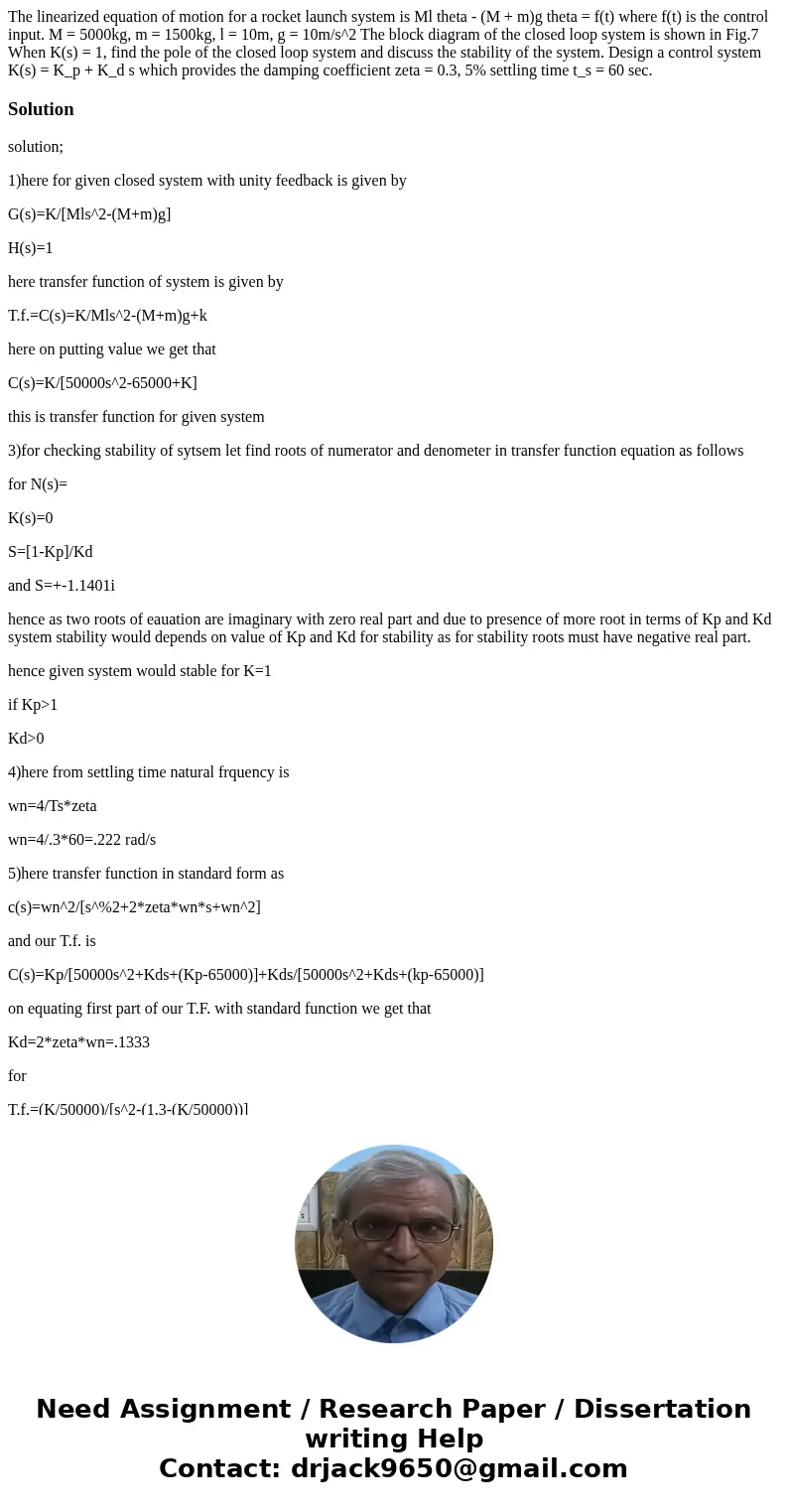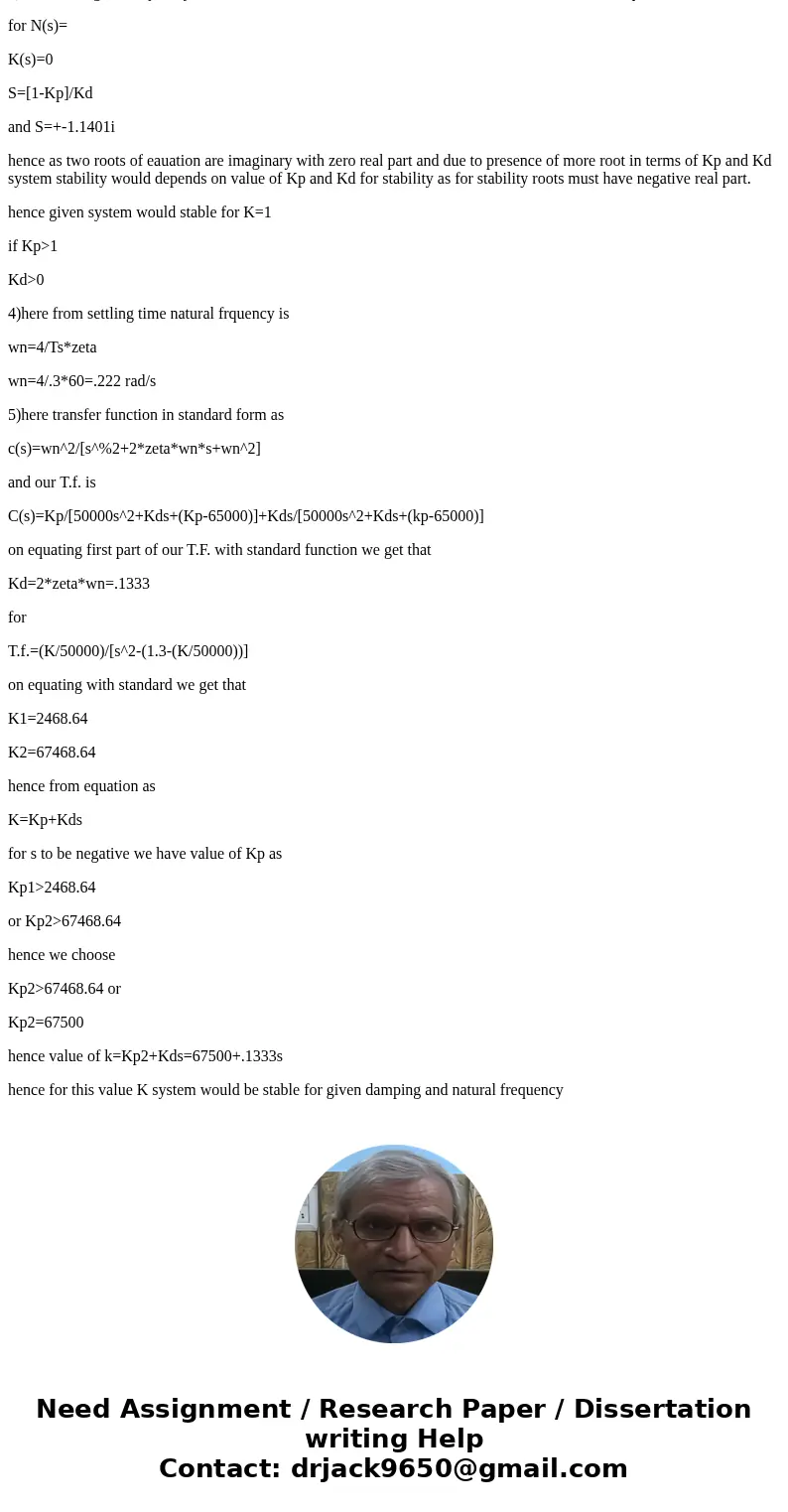The linearized equation of motion for a rocket launch system
Solution
solution;
1)here for given closed system with unity feedback is given by
G(s)=K/[Mls^2-(M+m)g]
H(s)=1
here transfer function of system is given by
T.f.=C(s)=K/Mls^2-(M+m)g+k
here on putting value we get that
C(s)=K/[50000s^2-65000+K]
this is transfer function for given system
3)for checking stability of sytsem let find roots of numerator and denometer in transfer function equation as follows
for N(s)=
K(s)=0
S=[1-Kp]/Kd
and S=+-1.1401i
hence as two roots of eauation are imaginary with zero real part and due to presence of more root in terms of Kp and Kd system stability would depends on value of Kp and Kd for stability as for stability roots must have negative real part.
hence given system would stable for K=1
if Kp>1
Kd>0
4)here from settling time natural frquency is
wn=4/Ts*zeta
wn=4/.3*60=.222 rad/s
5)here transfer function in standard form as
c(s)=wn^2/[s^%2+2*zeta*wn*s+wn^2]
and our T.f. is
C(s)=Kp/[50000s^2+Kds+(Kp-65000)]+Kds/[50000s^2+Kds+(kp-65000)]
on equating first part of our T.F. with standard function we get that
Kd=2*zeta*wn=.1333
for
T.f.=(K/50000)/[s^2-(1.3-(K/50000))]
on equating with standard we get that
K1=2468.64
K2=67468.64
hence from equation as
K=Kp+Kds
for s to be negative we have value of Kp as
Kp1>2468.64
or Kp2>67468.64
hence we choose
Kp2>67468.64 or
Kp2=67500
hence value of k=Kp2+Kds=67500+.1333s
hence for this value K system would be stable for given damping and natural frequency


 Homework Sourse
Homework Sourse